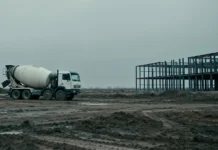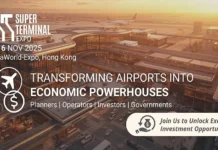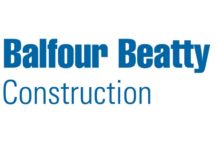In the rapidly shifting landscape of construction and project management, accurately predicting costs amidst market volatility has become a formidable challenge. Fluctuations in the prices of materials, availability of labor, and the uncertainties of the global market have had a severe impact on budgeting plans, and controlling costs has now become an essential ability of project managers. With all of these issues affecting different industries, the need to create new solutions and tools to manage costs while executing projects is increasing.
Understanding Market Volatility
Market volatility in construction is the result of multiple factors, including the reopening of the global economy, delivery system disruptions, supply chain issues, geopolitical instability, rising inflation, and shifting government policy. All of these factors create constraints and opportunities for materials and labor (skill level), and other items required to complete a project on time. The extent of market conditions on projects can be damaging in the absence of strong predictive tools and cost controls, which can lead to project delays, incomplete or poorly scoped work, aimed at staying within budget while compromising overall quality.
How Can We Control Costs in a Volatile Market?
To successfully manage volatile markets, project managers need to implement aggressive strategies that precede anticipating problems, remain adaptable, and place high emphasis on ongoing examination. The following are key strategies for cost control in uncertain conditions:
-
Order Early
Purchasing materials early during the project schedule is the most effective way to anticipate market volatility.
When project teams place orders for materials in advance, they reduce exposure to price spikes and shortages. Advance ordering is especially beneficial in industries that depend on strategic materials that are subject to fluctuation, like steel, wood, or semiconductors. The other significant advantage is that it enables suppliers to manage inventory and coordinate delivery schedules with project schedules, minimizing the risk of delays due to availability issues.
Still, early ordering is dependent on careful planning and projections of demand. Overestimating the amount needed might result in excess inventory that locks up project funds or underestimating might cause delays in execution. Using predictive analytics and trend analysis of the market can assist project teams in finding the best time and quantity for making an order.
Second, early ordering usually provides the basis for long-term contracts with suppliers, enabling project managers to obtain good terms, e.g., price discounts for large orders or priority in delivery plans.
-
Early Construction Packages
Breaking a project down into smaller, manageable construction packages provides tremendous flexibility in meeting cost variations. Early construction packages, e.g., ground preparation and foundation work, can be initiated while other components of the project are yet to be designed.
This method allows teams to nail down contracts and material costs for the early stages of work, minimizing the risk of cost inflation overall. Early packages also allow for the possibility of spotting problems earlier in the project schedule so that course correction can be made without cancelling the whole project.
A phased method enhances cash flow effectiveness. Rather than waiting for the entire project to be funded, preliminary stages can be undertaken in installments, which proves convenient for financing or allowing budget revisions caused by unstable markets.
-
Continuous Cost Analysis
A method that entails real-time monitoring and assessment of project costs, market levels, and resource utilization to offer actionable information at each stage.
Through the use of real-time tracking software and the coupling of cost analysis with project management systems, teams can forecast potential overruns and deal with them ahead of time. Predictive analytics, fueled by AI and machine learning, can model scenarios based on historical trends and current data to provide incredibly accurate projections of cost.
Ongoing analysis also keeps stakeholders in line with financial goals. Ongoing reporting and openness instill confidence within investors, financiers, and customers, creating a culture of responsibility and teamwork.
There is one drawback to the use of advanced analytics software and training: the initial investment. However, savings down the line along with greater ability to make decisions negate these initial costs.
-
Diversification of Suppliers
Dependence on a single supplier can expose projects to interruptions. Diversifying suppliers is a proactive strategy that mitigates risk and assures continuity if one source is facing constraints/prices/capacity.
Through developing relationships with more than one supplier, project teams can potentially dampen the impacts of local and worldwide market disruptions, as well as price changes and delays in transit. For instance, purchasing from suppliers in other geographic locations can offer a cushioning effect for policy modifications, natural disasters, or trade sanctions imposed upon a region.
But to manage a diversified supplier base, there needs to be effective logistical coordination so that no issues like delivery schedules mismatch or quality deviations occur. Setting standards in communication, quality, and delivery schedules is essential so that everything runs smoothly.
-
Flexible Contract Structures
Contracts are the linchpin of any endeavor, setting terms and duties between stakeholders. Stiff contracts in turbulent markets can further financial risks. Contract structures that are flexible, such as cost-plus contracts or escalation clauses, can serve as a buffer against surprise cost escalations.
Cost-plus contracts permit the modification of project expenses, with the purpose of paying contractors and suppliers justly for market-driven price fluctuations. Escalation clauses work in the same manner, making adjustments in material costs less likely to cause conflicts or financial burdens.
Although such contracts are flexible, they necessitate mutual trust and honesty among stakeholders. Having clear measures of acceptable cost modifications and open communication will help avoid abuse or miscommunication.
-
Alternatives to Building Materials
Innovation in material science has revolutionized the way buildings are made. In unstable markets, alternative materials help break the cycle of dependence on volatile resources that may see unpredictable price swings.
For example, employing engineered wood products, recycled steel, or composite materials not only reduces expenses but also contributes to sustainability efforts. Innovative materials such as 3D-printed parts or prefabricated modular components enhance efficiency further and lower labor and transportation expenses.
Implementing alternative materials does, however, demand close assessment of performance, longevity, and regulatory compliance. Collaboration with material specialists and pilot tests guarantee that substitutions equal or surpass project specifications.
-
Technology Integration
The adoption of cutting-edge technologies has been a game-changer in managing project costs. Technologies such as Building Information Modeling (BIM) and digital twins give a real-time, detailed picture of the project so that the cost can be predicted accurately and resources can be optimized.
BIM enables groups to model various market conditions and evaluate the budget effect of each decision, whereas digital twins build an ever-changing virtual representation of the project to monitor and adjust on an ongoing basis.
In addition, cloud technologies enable collaboration among stakeholders such that they are all kept informed and aligned. The challenge here is the implementation of these technologies at scale, which requires investments in technology, training, and infrastructure. The savings and efficiencies over the long run more than justify the actions.
-
Strategic Contingency Planning
Contingency planning is one of the foundations of risk management, especially in uncertain market conditions. Allocating contingency funds provides a financial buffer against unforeseen expenses, such as emergency repairs, sudden material price hikes, or accelerated project schedules.
Sound contingency planning entails a careful assessment of risk to quantify the probability and magnitude of possible scenarios. Instead of using a rough-cut contingency percentage, money should be assigned specifically for identified risks, increasing predictability and control.
Periodic review and updating of contingency plans helps keep them current as market situations change. It is important to achieve a balance between keeping adequate reserves and providing resources for current project requirements.
Case Study: Cost Management in Renewable Energy Projects
Renewable energy projects, typically in the form of solar panels and wind farms, serve as compelling examples of managing costs amidst market uncertainty. Renewable energy projects face specific challenges like volatile prices for solar panels, photovoltaic cells, and turbine blades. By procuring materials early, diversifying suppliers, and using great analytics, developers managed to deliver projects under budget in uncertain marketplaces.
Visual Representation: Cost Control in Action
To illustrate the importance of proactive cost management, below is a sample comparison table:
| Strategy | Benefits | Challenges |
| Order Early | Locks in prices, reduces cost escalation | Requires precise demand forecasting |
| Early Construction Packages | Enhances flexibility and reduces delays | Requires detailed planning and coordination |
| Continuous Cost Analysis | Provides real-time insights | Requires investment in technology |
| Supplier Diversification | Reduces supply chain risks | May increase logistical complexities |
The Role of Collaboration in Cost Management
Collaboration with stakeholders reduces cost in volatile markets. Financial transparency, accessible lines of communication, and a common risk framework create accountability and trust. Partnerships with suppliers, contractors, and financiers allow for easier negotiation of terms and improved alignment on project objectives.
Preparing for the Future: Long-Term Strategies
The construction and project management industries are changing to meet the needs of an ever-changing marketplace. Long-term strategies, including investing in workforce training, embracing sustainability, and enabling innovation, will be crucial to defining the future of cost management in unstable markets.
Sustainability, specifically, has a two-way benefit: minimizing environmental footprint and reaping financial gains in terms of energy savings and resource efficiency. With increasingly stringent controls on carbon output and greater adoption of green building certifications, green practices will no longer be a choice but a necessity.
Conclusion: Adapting to Thrive in a Volatile Market
The potential to anticipate and managing project costs in uncertain markets depends on a mix of prescience, flexibility, and innovation. Through measures such as initial procurement, ongoing cost monitoring, and technological infusion, project managers can manage risks and improve project performance. As sectors adopt these strategies, they open doors to resilience and success in an uncertain world.





























